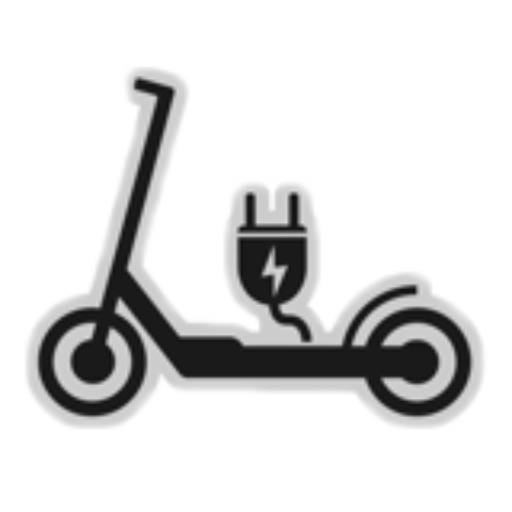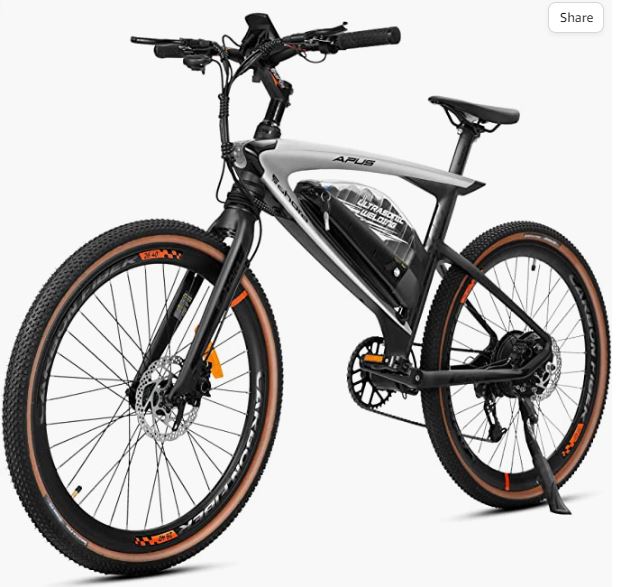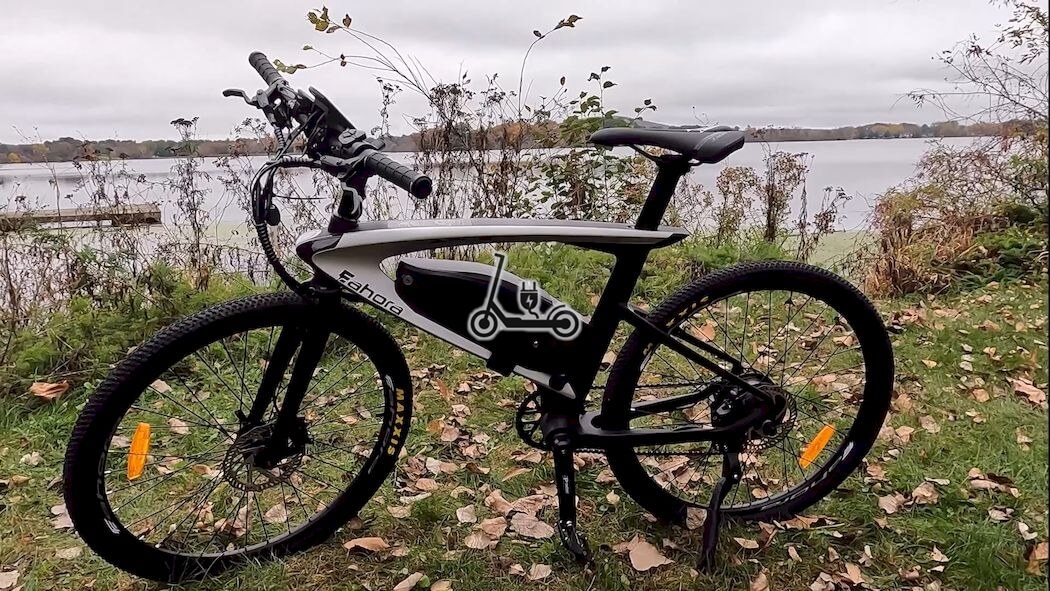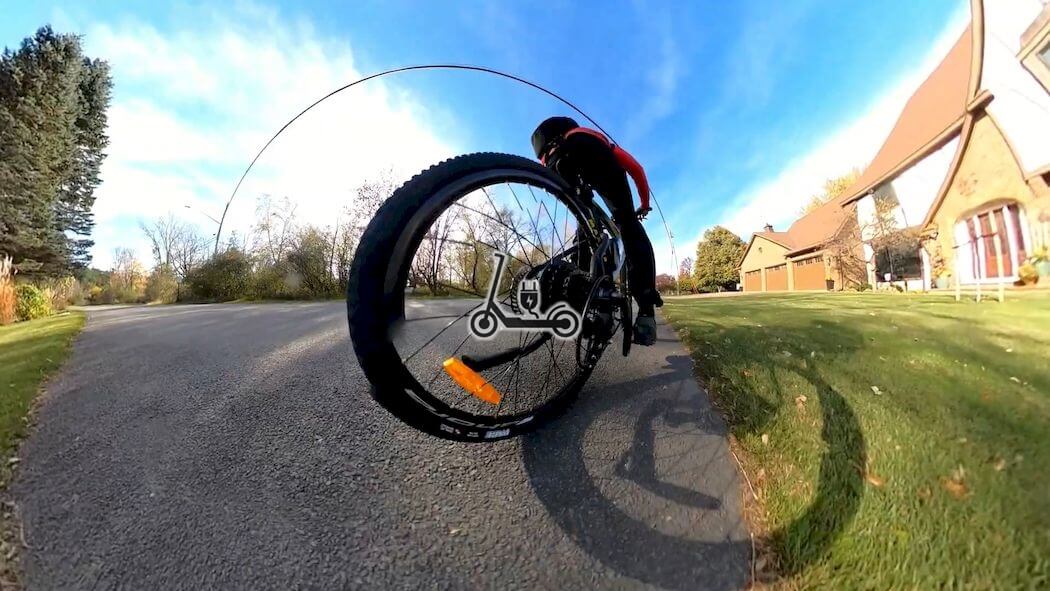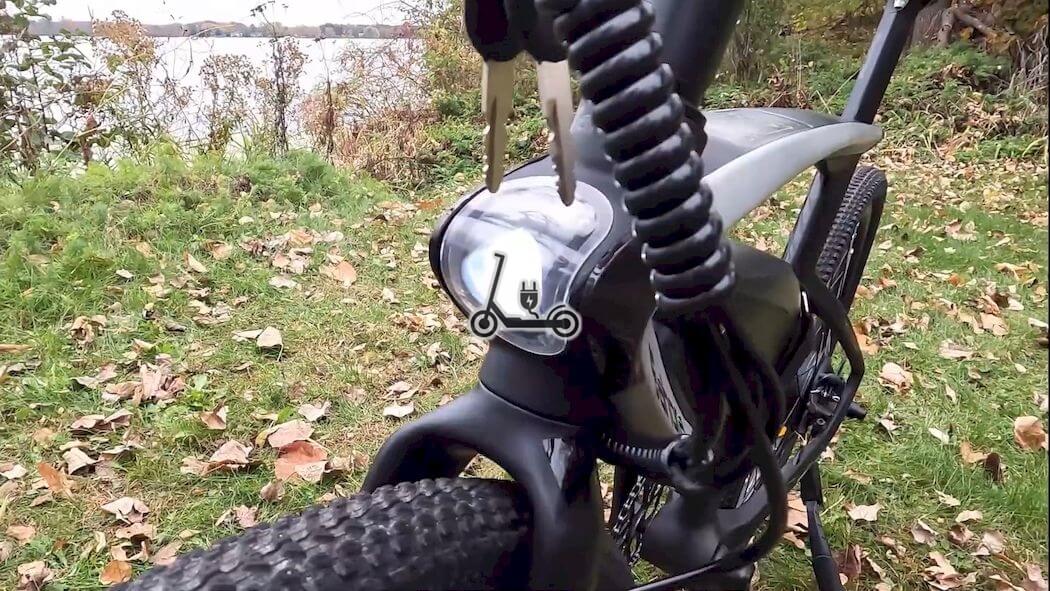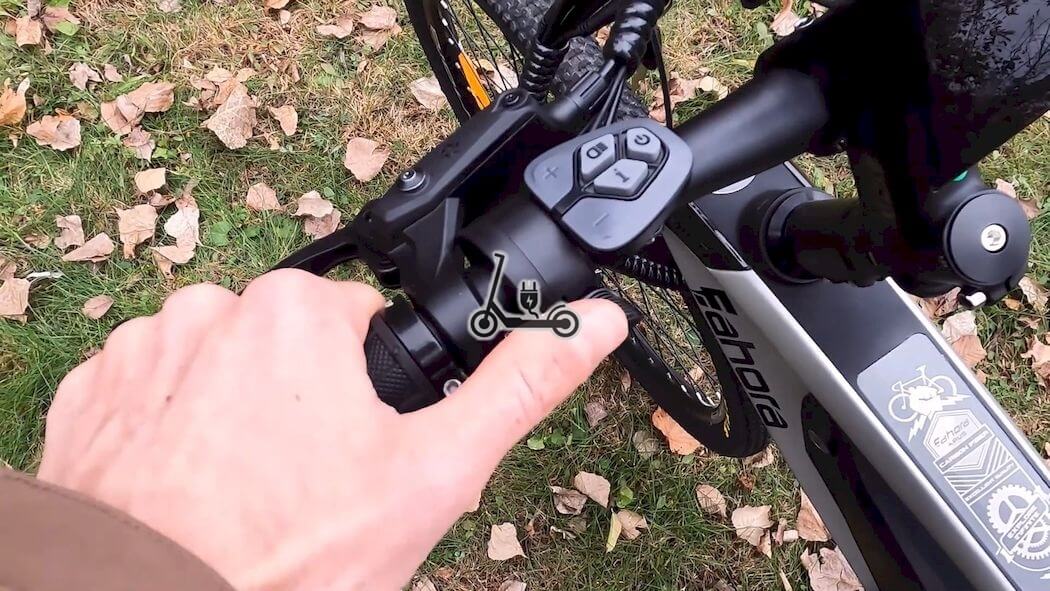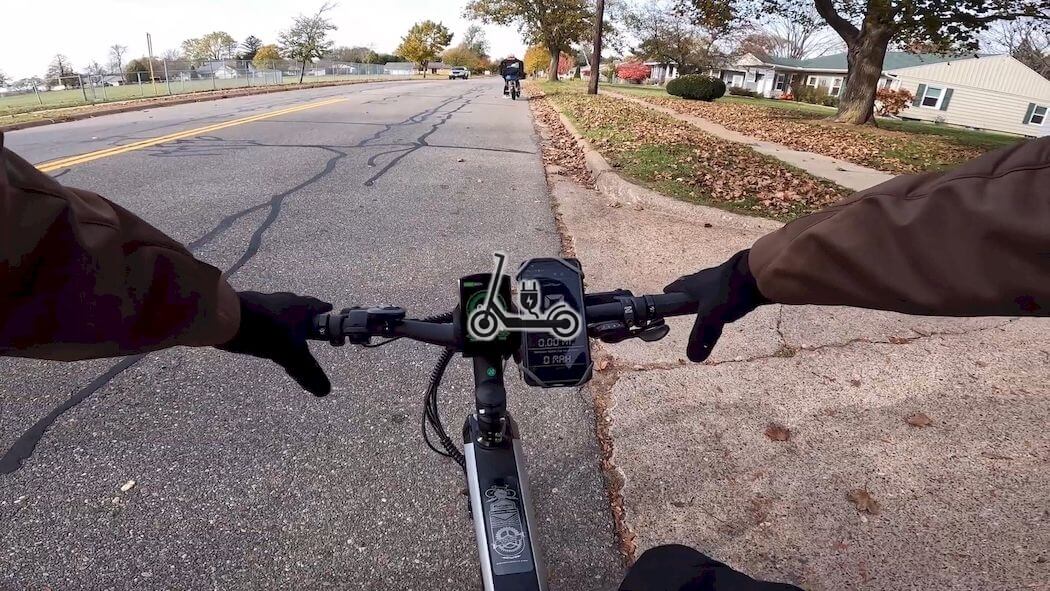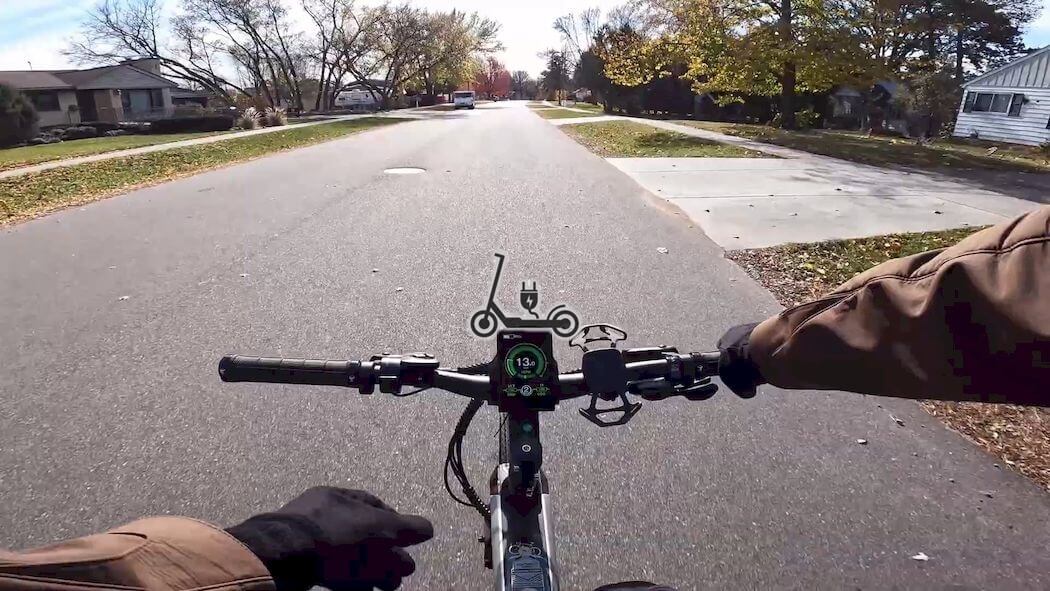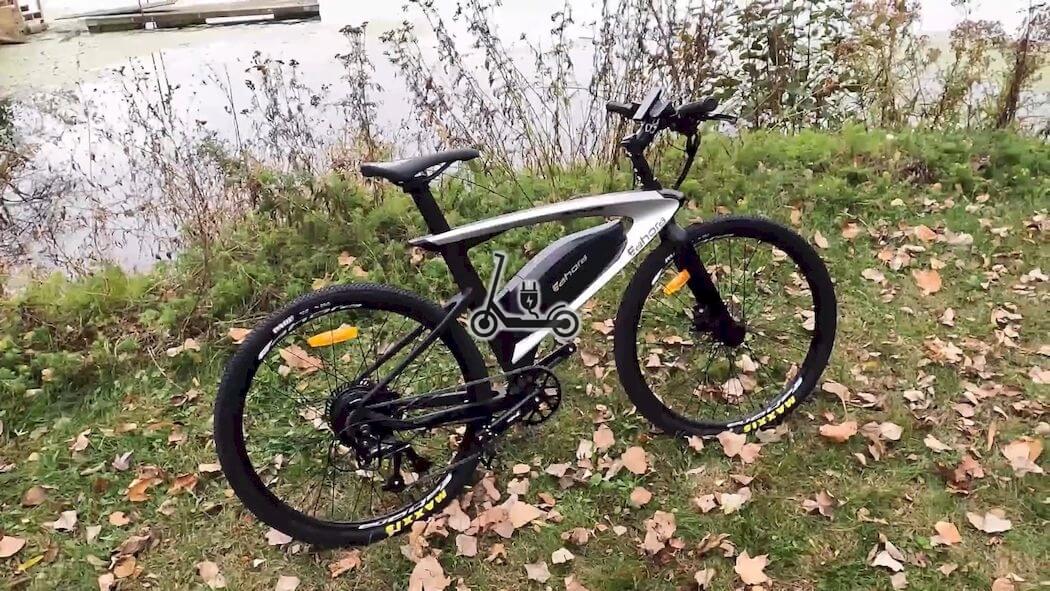The most recent model to the Eahora brand lineup is the Apus electric bike. It’s the bike’s turn to pass in our columns now that they’ve received their new Coozy scooter. Here is the Eahora Apus test, from packaging to complete battery drain.
The Eahora store offers a large selection of electric bikes, with 5 electric models available that range from foldable to fatbike. The box is consequently intended for as many clients as possible, but it casts doubt on its capacity to deliver a high-quality good. With the introduction of a new model, the Eahora Apus, which is primarily meant for urban use, has the company overextended itself? Answer in this review.
| Frame Material | Carbon Fiber |
| Suspension Type | Rear, Front, Dual |
| Special Feature | Digital Display |
| Included Components | Electric Bike, Charger |
| Brake Style | Disc |
| Motor | 500W |
| Max speed | 27MPH |
| Max torque | 50N.m |
| Battery | 48V 17AH |
| Professional tires | 26 x 2.15-Inch |
Eahora Apus: Design and Build Quality
We always dread the unpacking and assembly phase. Our most recent encounters weren’t the best because they all required us to hire a pro in order for the bike to function properly, which wasn’t the most enjoyable outcome. The front brakes are off-center, which makes it impossible for the bike to move ahead normally.
We prayed that we would finally have a bike whose assembly goes smoothly after these numerous setbacks. With the Eahora Apus, it won’t be. There are no issues with the unboxing, but the assembly falls short of our expectations.
The bike’s design cannot be changed once it has been put together. This Apus is slick and sophisticated thanks to its use of black and white. The stem has a race bike-like appearance. The same observation applies to the 22.49 kg featherweight wheels. The bike’s battery is flawlessly incorporated. We appear to be moving toward the city bike of choice. “As its name implies, I suppose.”
Except for the handles, which are quite uncomfortable to touch, there are no ergonomic issues. The editorial team unanimously agreed to state this, but it is still our view. Other than that, when you see the bike in person, it will only have a minor impact.
The company corrected its errors with the Apus by adding mudguards, a front basket, and that’s all. No bells, anti-theft, or the back light. You will need to add these necessary extras by yourself.
The front basket questions are more significant omissions. No rim, no fastening built in. We are a long way from Vanmoof’s efficient and useful basket. Since it served no purpose and merely increased the weight of the Apus, we even made the decision to remove it.
Let’s move on to the Apus’s characteristics. A small, bright LDC screen is mounted on the left side of the handlebar of this electric bicycle. With it, you can view various info and switch the headlight on or off:
- The bike’s rate of speed
- The distance the battery has traveled so far.
- Assistance settings
The controls on the left of the screen can be used to change the bike’s modes, which range from mode 0 “without aid” to mode 5 “maximum assistance.” The top assistance speed is 25 km/h, which is the same as other electric bikes in France. In addition, you’ll need to warm up your leg muscles.
To add an accelerator to the bike, similar to what a scooter may have, additional handles are included with the bike. This prevents pedaling but is completely against the law in France. Similarly, you may unlock the bike and change the settings (and travel up to 35 km/h) by clicking the two buttons on the screen. This is also forbidden, but the brand doesn’t seem to matter much because the manipulation’s illegality does not render it meaningless.
Eahora Apus: Motor and Driving
Performance-wise, we had some reservations: the 500W motor linked to 50nm. Fortunately, this Apus enjoys lying to us. Without exerting any effort, it has more than enough power to illuminate the Parisian streets. One thing, nevertheless, deserves your attention: the climbs. We confidently climbed the buttes Chaumont’s slopes, but we returned disappointed since the bike wouldn’t start up the hills. It’s unfortunate, but not prohibitive given that none of the bikes we examined in this range passed this test.
The power and cadence sensors, aside from this minor point, are highly effective and will precisely enable you to limit the effort to the maximum without pedaling in semolina. We feel very similar to the excellent RadMission 1, with the exception that the seven speeds make it simpler to control your pedaling rate whereas there is no speed on the RadMission.
The bike’s 9 speeds and electric motor enable a comfortable ride throughout town. However, once you leave the paved roads, it is no longer the same tale; the difficulty of the walks or cobblestones results from the lack of suspensions. However, if you only do local journeys, the bike will perform flawlessly because the assistance starts working from the first pedal stroke and the acceleration is flawless.
The Apus is perfect for usage in cities and is therefore a bike in this price range. The bike is also easily maneuverable even without assistance because of its light weight. If you become lost before reaching your destination, you may easily get back on track.
Finally, the comfort of this bike can be criticized. On the one hand, there have been no suspensions that we have observed. Additionally, the saddle is harsh and immediately causes pain in the buttocks once the distance is greater than the width of a human hand. Consider purchasing a spare oversole or replacing the saddle entirely.
Eahora Apus: Battery and Range
The promised 65 km of autonomous travel in help mode is kept. We mostly met that estimate by switching between modes 3 and 4; in our opinion, mode 5 is identical to mode 4 except for the fact that it consumes more battery.
As a result, we traveled more than 70 km during our session, which is excellent for extended excursions or avoiding daily battery recharges for electric bikes. Particularly when the load is less than the autonomy, we have time to become irritated with almost 7 hours of charging. Although having a large battery has its drawbacks, we would have liked rapid charging.
Eahora Apus: Conclusions
In conclusion, is it worthwhile to be duped by the Eahora Apus? We were personally taken in by the electric bike. Although it isn’t the greatest model we’ve tested, it fulfills its obligations and doesn’t make any significant errors. The performances on the climb and the comfort Spartan are a touch tense, but the overall message is still clear. The bike offers terrific range, good power, and a sleek design.
The price of the Eahora Apus bike is reasonable. In terms of performance and handling, the bike succeeds. However, we lament that it has not learnt from its earlier faults, particularly in the still difficult assembly and in the absence of accessories that are nonetheless legally required – budget an extra $50 to purchase a rear light, bell, and cozy saddle. Last but not least, it is a model that we suggest to anyone searching for a dependable bike with enough power to go on paved roads for this price range.
